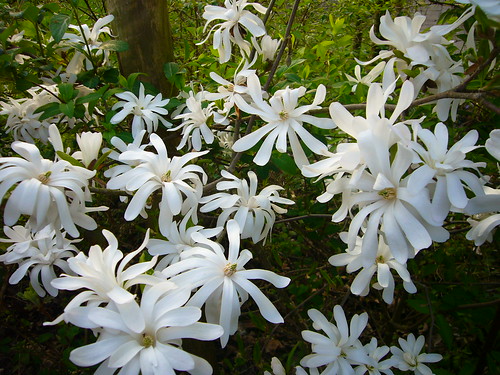
O alho na micropropagação
As magníficas propriedades do alho são sobejamente conhecidas. Numa das ultimas mensagens mencionei a sua utilização como desinfectante e antibiótico para eliminar infecções tardias em sementes de Phormium tenax. Faço agora uma pequena descrição de como deve ser feita a sua utilização e quais a propriedades deste magnifico e acessivel antibiótico.
O antibiótico mais poderoso do alho é a Alicina, existem no entanto um numero alargado de outras substancias com efeitos antifungicos, antioxidantes e regeneradores. Concentremo-nos na Alicina.
A Alicina é uma substancia formada principalmente quando há rotura das parecedes celulares das celulas do alho, nesta altura a enzima Alinase entra em contacto com a Alina formando o antibiótico Alicina. Este fenómeno ocorre muito rapidamente mas a Alicina é uma substancia instável e sensivel à temperatura. A utilização da Alicina é no entanto de elevado interesse devido à capacidade de penetração excelente deste antibiótico em tecidos vivos. Para obter uma solução estável deste antibiótico deve proceder-se do seguinte modo:
-Desinfectar alguns dentes de alho ainda com a pelicula exterior ,em alcool 70% por imersão durante alguns segundos ou aspersão e esperar que a pelicula externa seque em assépsia.
-Retirar a pelicula externa com material devidamente esterelizado.
-Colocar os dentes num recipiente e imergi-los em água esteril, normalmente eu uso caixas de petri, cerca de 3 dentes de alho são suficientes para fazer uma solução suficientemente concentrada numa caixa de petri de 10cm cheia com água.
-Fazer cortes nos dentes de alho até estes se ficarem completamente triturados assegurando sempre que os cortes acontecem debaixo de água de forma a estabilizar a molecula a alicina imediatamente após a sua formação.
Nota: pensa-se que elementos desestabilizadores da molécula de Alicina sejam tambem hidrosoluveis o que faz com que em soluções aquosas de alho, estes esteja menos disponiveis para a degradação da molécula. As soluções criadas da forma acima descrita podem manter-se activas durante cerca de um mês no maximo se guardadas no frigorífico, sendo que quanto mais rapidamente forem utilizadas melhor. Os periodos de exposição em tecidos vegetais sensiveis devem ser mais reduzidos, cerca de uma hora.
The garlic in micropropagation
The magnificient properties of garlic have been widely described throughout the history. In one of my last posts i have mencioned a garlic solution to eliminate recalcitrant infections on inoculated seeds of Phormium tenax. Now i will make a small description of the caracteristics of this inexpensive antibiotic and how to take advantage of them.
The most powerfull antibiótic available in garlic is the Alicin, nevertheless there is a wide range of others like antifungal and antioxidant agents as well as regenerative substances.
Alicin is a substance formed mainly when there is a rupture of garlic cell walls and two substances come together, Alinin and Alinase. The enzyme Alinase converts then Alinin into Alicin in wich we will focus. This reaction is very fast but Allicin itself is very unstable at normal environmental conditions. The utilization of Alicin is of high interest though because this antibiótic has an excelent penetration coeficient in live tissues. To produce a stable Alicin solution the following procedure should be used:
- Desinfect a few garlic goves with a brief imersion in 70%ethil alcool or preferably by spraying them with the alcool in both sides. Wait until the goves are dry.
- Place 3 goves in a sterile petri dish and remove de outside membrane carefully.
-Fill the petri dishes with sterile destiled water and start cuting the goves in smal slices making sure that the cut is always being made under the water. Repeat the cutings untill the garlic is completelly choped in small pieces.
-The solution is now an active concentrated antibiótic, use it or place it in the refrigerator.
Note: this solution will stay active for up to 30 days losing its activity progressivelly. It´s usage with sensitive plant tissues like new shots, must be for a short period of exposure or tissues will be damaged.







.JPG)


